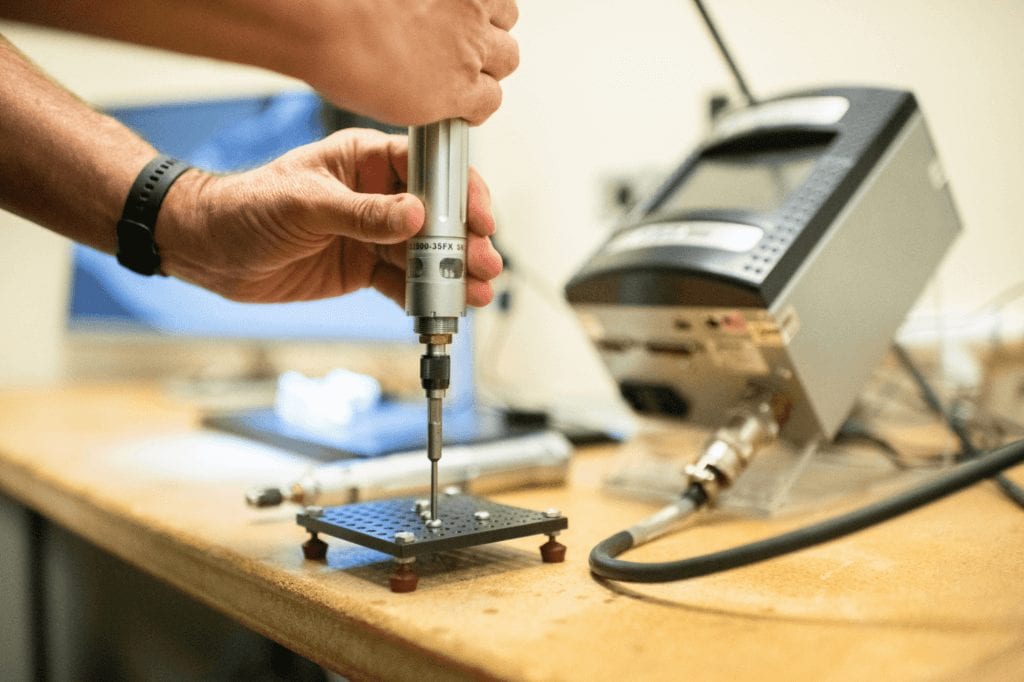
Behind the Scenes: Machine Builder’s Application Lab
Ever wondered what it’s like inside a machine builder’s application lab? Within the AMS plant, located in Cincinnati, Ohio, is our state-of-the-art applications lab. This lab is designed specifically for taking new ideas and providing proof of concept before attempting to automate the process. Asking yourself the right questions, in the beginning, is crucial to the project’s success, which is the first step in our 17-step process.
Our lab has three application pillars that we utilize to assist our partners: ultrasonic welding, leak testing and precision fastening. Here we briefly explore each of these three pillars and how they set AMS apart from the rest.
Ultrasonic Welding
First, we’re going to review ultrasonic welding. Ultrasonic welding is a proven method for joining together two plastic components. One of the first steps we take is to review your CAD data and your part to ensure that your joint design is optimized for manufacturing. Also, we’ll go through the resin that you’ve selected. Other considerations, such as if you need a hermetic seal, flash tolerance, part marking and cycle time, we address during the developmental phase. This will help us and our customers determine which frequency, tool, design and process will give them the best outcome. We always invite our customers to send us parts or come visit our lab to assist with developing the right solutions for their production requirements.

Leak Testing
Next, let’s look at leak testing, as it is one of our core competencies. We pride ourselves on helping our customers implement successful leak testing systems. Similar to any stage in the production process, asking yourself the right questions at the beginning is crucial for automation. For leak testing, The first step is to determine what type of tests will produce the results you’re looking for. Examples of air leak tests include pressure decay, vacuum decay, mass flow and many others. Once you have determined the type of tests that you’ll be using, you then have to gather information related to the part you’re testing. This information can include the internal volume of the part, the desired test pressure, the allowable leak rate, the sealing solution and cycle time requirements. As ideal gas laws prevent certain steps from being sped up in an air leak test, implementing multi-station systems and automating manual mundane tasks can help combat some of these speed issues. We are here to help you find answers and empower you for long-term success. Our team’s willingness to work with you puts us above other machine builder’s application lab processes because communication is a top priority.

Precision Fastening
Finally, let’s look at the third pillar: precision fastening or automatic screwdriving. A successful screwdriving system requires many aspects that need to be considered or determined before a concept can be developed. A few topics that could be considered are the torque spec and the RPM to specify the right system. Also, the material we’re screwing into and the accuracy of locating the screws is important. Additionally, general production requirements such as operator dexterity and machine layout have to be considered, whether your process is manual, semi-automatic or fully automated. Annual volume and cycle time are the main drivers in qualifying what works best for you. At the beginning of any project, we can review all of these items and ensure we have checked all the boxes for success.

Have a Project That Needs Work?
If you have a project that needs any ultrasonic welding, precision fastening or leak testing, we would love to discuss the project with you. Separate from other machine builder’s application labs, we have our proven 17-step process and a team of dedicated professionals willing to go above and beyond your expectations. Contact us today for an application review.
